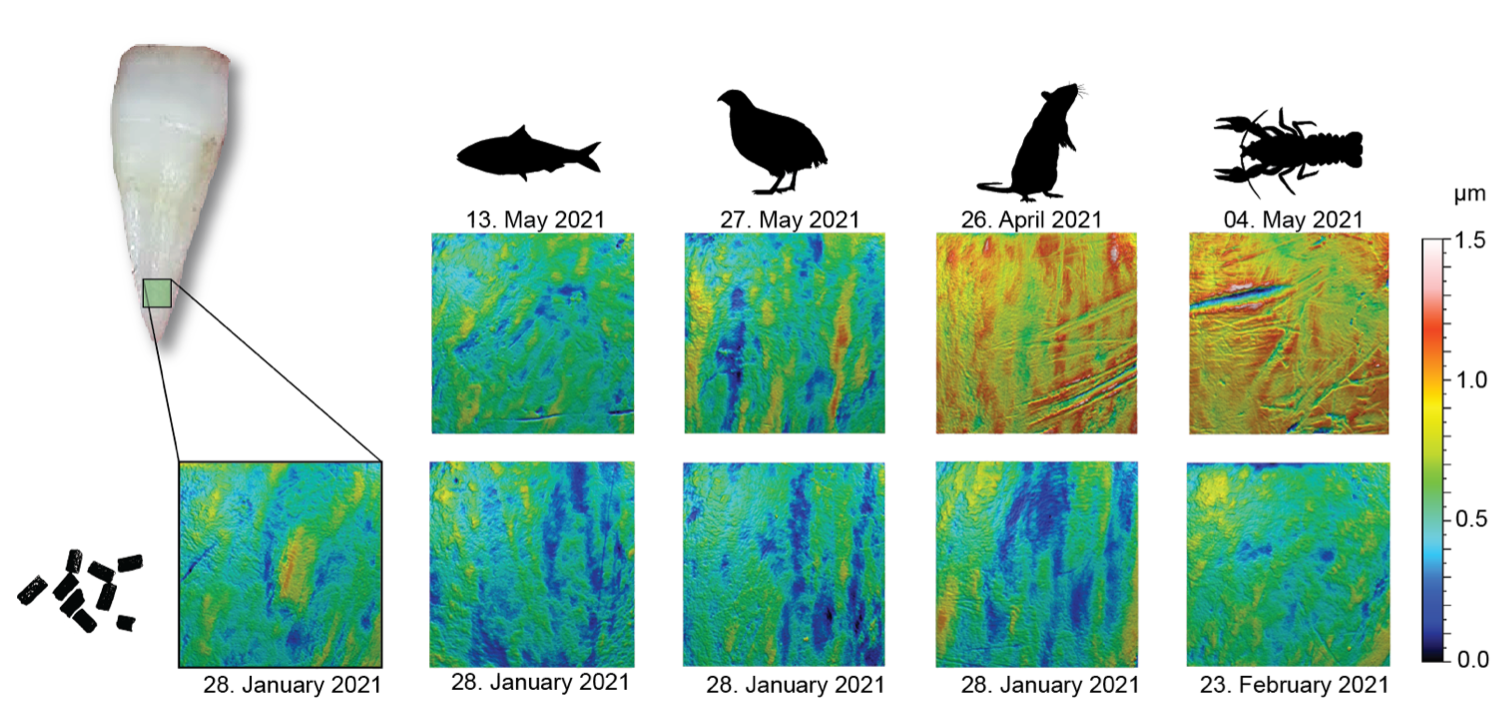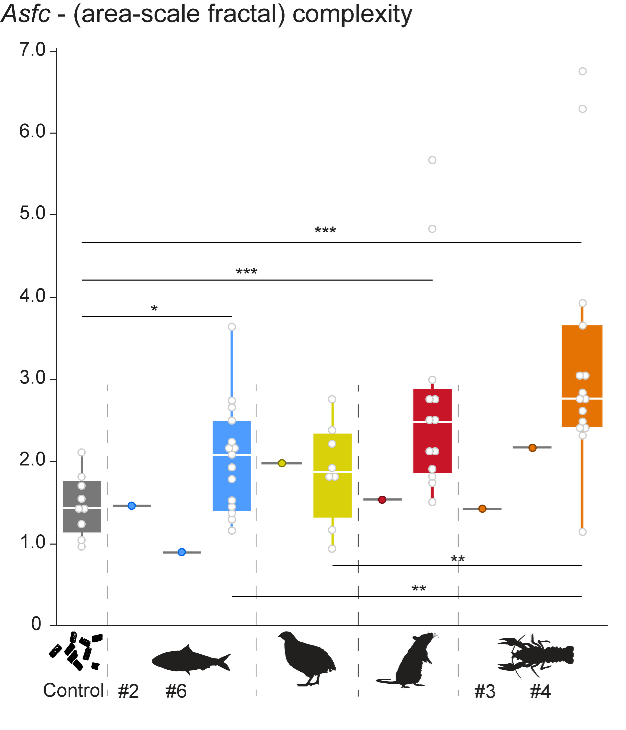Microscopic wear marks on alligator teeth indicate if they fed on hard foodstuffs
- Headline
- Press Release
Feeding experiments with young alligators show diet-specific tooth wear /
Findings can help to identify feeding behavior of extinct crocodilians and other archosaurs
Eating only crawfish or rats results in more pronounced microscopic tooth wear than eating only fish or quails - at least for alligators. This is the conclusion reached by researchers from University of Tokyo (Japan) and Clemson University (South Carolina, USA) in their article published in the online journal Frontiers in Ecology and Evolution. Because the teeth of alligators, and other crocodilians, are similar to those of extinct species like carnivorous dinosaurs, these results can improve our understanding of their dietary behavior.
Dental wear analyses are often used for diet reconstruction of extinct mammals, and have been ground-truthed for them through numerous studies. Mammals - both plant- and meat-eaters - have very specialized teeth and chew their food a lot. They also only exchange their teeth once, when losing their milk teeth, which results in pronounced microscopic wear marks on the dental enamel of permanent teeth. Such wear marks can then be related to the type of diet consumed. Lizards, crocodilians, and also carnivorous dinosaurs (theropods) change their teeth frequently during a lifetime, and do not chew their food thoroughly. The multi-national research team therefore wanted to know if, in alligators, contact time between tooth and food would be sufficient to form diet-related tooth wear before teeth are exchanged. They collected shed teeth of five young alligators fed specific foodstuffs (reptile pellets, fish, quail, rat, or crawfish) over the course of 4 months, and quantified the wear pattern through a measurement called area-scale surface complexity (Asfc), which has been used to detect hard-object feeding in mammals. Before starting the experiment, all alligators had only eaten pellets, and their teeth showed almost no detectable wear marks. But the researchers found that, after only a short time, the alligators developed distinct tooth wear patterns on the experimental diets. While wear patterns for the teeth of alligators eating soft foods (fish and quail) showed fewer and smaller wear marks, the teeth of alligators eating harder foods (rats and crawfish) showed deep scratches and diverse, overlaying wear marks. Like in mammals, tooth wear complexity was high when alligators fed on the hardest foodstuffs, like rats and crawfish.
Examples of microscopic wear patterns on alligator teeth. Each column shows teeth from the same individual, at different time points during the experiment. In the lower row, one tooth was collected while the alligators were feeding on pellets. Then, after about 3 months on their designated diets, rat- and crawfish-feeders developed distinct wear marks, while fish- and quail-feeders showed fewer wear marks. Credit: Winkler et al. (2022).
Pooled complexity data over the course of the whole experiment. Grey lines belong to data from one tooth collected before the start of the experiment. For fish and crawfish, the feeding trial was repeated with different alligators, therefore two "before" points are shown. Credit: Winkler et al. (2022).
"This is an exciting result, because it will allow us to better identify diet preferences of wild crocodilians, and also extinct archosaurs such as theropods", says Daniela E. Winkler, lead author of the study at University of Tokyo. "Enamel is the hardest biological material, and we know that enamel wear marks can be preserved over long times in the fossil record, potentially millions of years. Now we are confident to extent dietary analyses to understand niche partitioning in extinct archosaurs, and maybe also ontogenetic niche shifts." Large crocodilians change their prey spectrum drastically during life when they grow, from small invertebrates to large vertebrate prey. Such diet shifts might have also occurred in dinosaurs, and dental wear analyses could be a useful tool to detect such life-history patterns.
Pellet feeding
https://drive.google.com/file/d/14Lhd2XGenbuCSsJmOGQYuQCXl67leeGp/view?usp=sharing
Fish feeding
https://drive.google.com/file/d/1xPPNwUQddkSrpBlNVz34JLMFDEy2lqqS/view?usp=sharing
Quail feeding
https://drive.google.com/file/d/10O6HS3lUq1cjk77dHWXnLCa_xf4Vwrxo/view?usp=sharing
Rat feeding
https://drive.google.com/file/d/1l2Gh3Vw-SLe70iE04dPHhuhS2aKlo_rw/view?usp=sharing
Crawfish feeding
https://drive.google.com/file/d/1D6J3Kl1GCM8uvklE19cC0KNkmg-nx2rw/view?usp=sharing
Involved in the study were scientists from the University of Tokyo, Department of Natural Environmental Studies, The University Museum, The University of Tokyo, and Clemson University. The study was funded by research grants provided by the Japan Society for the Promotion of Science to Daniela E. Winkler (grant ID 20F20325) and to Masaya Iijima (grant ID 19J00701)
Publication
D.E. Winkler, M. Iijima, R. W. Blob, T. Kubo and M.O. Kubo. Controlled feeding experiments with juvenile alligators reveal microscopic dental wear texture patterns associated with hard-object feeding. Frontiers in Ecology and Evolution, Date: 27th October 2022, DOI: 10.3389/fevo.2022.957725.
Links to labs
Mugino Kubo Lab
https://sites.google.com/edu.k.u-tokyo.ac.jp/mugino-kubo-lab/home
Richard Blob Lab
https://sites.google.com/site/richardbloblab/






